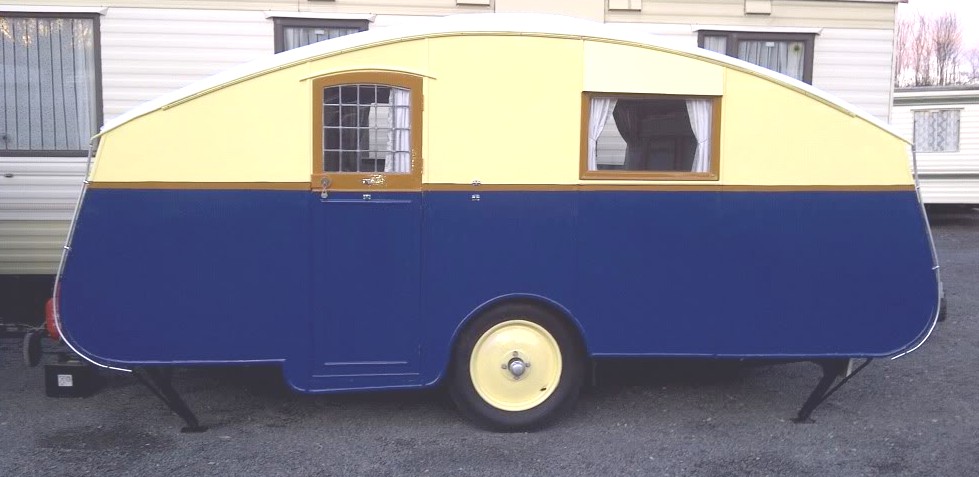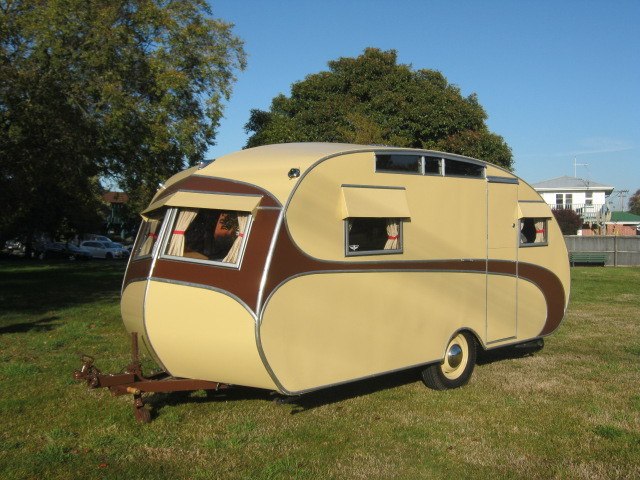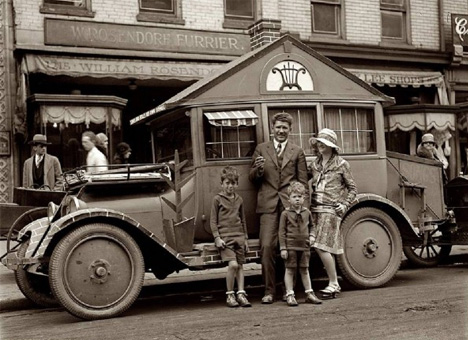Caravan History
1930's

1933 Winchester

1937 Car Cruiser Sport 4
The 1930s saw technology have a significant impact on all aspects of peoples’ lives. The car, with its new designs, more modern production techniques and cheaper pricing, appealed to the masses. The middle classes were now able to travel and explore the countryside at will, make use of their car to go on holiday. Touring caravans too were to develop and become more affordable. With the increasing popularity of caravans, some official caravan sites began to appear - though pitching by the roadside was still a favoured option.
Eccles still led in caravan development (even entering in the 1932 Monte Carlo rally) and caravan model names such as Senator and Imperial becoming firm favourites. In 1936, the company expanded its works to increase production, in tandem with the surge in demand. Eccles also took the lead in the lucrative market, with luxury caravan special builds especially for showmen. Luxury Winchester caravans were also building up a clientele who wanted caravans built to their individual specifications.
Botto Gas was released for the caravan industry. Initially, few took it up due to the enormous cylinder and price. As prices tumbled and cylinders became manageable, gas replaced oil in lamps and cookers. Radios and even showers and baths were added to luxury, high end caravans, while even cork insulation was also being looked. The old pin coupling, from the 1920s caravans, was replaced with the new ball design. This was regarded as better, with a smoother tow and generally safer too. Some caravans even had road lights fitted too.
Manufacturers such as Scotland’s Thomson Caravans, who had produced car pulled caravans in the 1920’s, had slowly grown. By the end of the 1930s were producing streamlined tourers from its Falkirk factory.
The 1930s saw a new industry created with the growth of caravanning. By this time the export market to Europe had begun, with Eccles and Car Cruiser being the main manufacturers to sell caravans abroad. Both were highly sought after by these caravan buyers. However, with all the advancements there was a dark cloud on the horizon. The threat of war was looming and as far back as 1937 Eccles had approached the MOD with regard to wartime ideas for supplying armored trailers . Thomson had began to secure contracts for ambulances and other war work. Clifford Dawtrey also put forward his ideas for trailer ambulances. Typical of Dawtrey, he was to add 12-volt lighting systems and proper single beds.
Caravanning would virtually stop by 1939, with only a few being built, as most caravan companies closed down and post war would never re-open.
